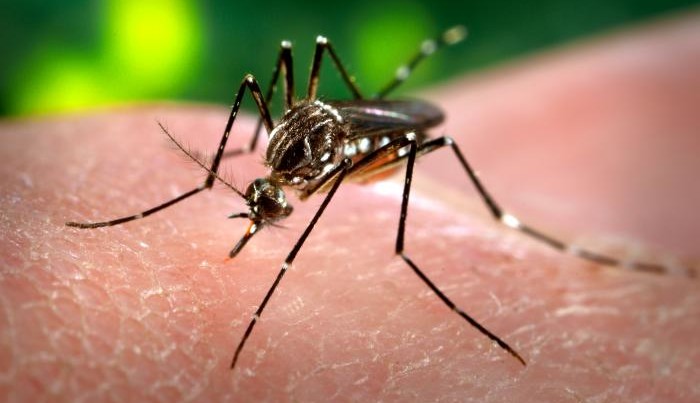Small Circuits Revival (26): Mosquito Repeller
on

Mosquito Repeller
idea: Elex Team
To get rid of the annoying, biting mosquitoes from our bedrooms at night, we definitely do not want to reach for the spray can of insecticide – because, honestly: that's not done anymore. Instead, we reach for the ... soldering iron! And this small mosquito repeller using just 3 ICs and a sole transistor, is probably cheaper than a spray can anyway.
It has been known for some time that mosquitoes are annoyed if not repelled by ultrasonic noise in the range of about 20 kHz to 30 kHz (additional advantage: we can't hear it). That effect is exploited by the circuit here.
In the schematic below, IC1b (half of a 556) is configured as an astable multivibrator (call it an oscillator).

The frequency generated is determined by capacitor C2 and resistor R21 and one of the resistor branches connected to the outputs of IC2. Depending on which output of IC2 is active, the frequency at the output of IC1b is between about 40 kHz and 60 kHz (assuming the component values as indicated). IC3 divides this frequency by 2 and makes it nicely symmetric, so that we arrive exactly in the ‘mosquito repeller frequency range’. The piezo tweeter converts the electrical signals into ultrasonic sound waves with considerable efficiency. Because a squarewave is applied, many high-frequency harmonics are present that are especially annoying for mosquitoes.
IC1a ensures that the circuit does not produce just one single, fixed frequency, but a kind of 10-step ‘musical scale’. The target group (that is: biting, blood-sucking critters) therefore does not become accustomed to the sound. It takes 1 to 2 seconds to step through this scale.
To verify that the Mosquito Repeller functions correctly, you can temporarily connect a capacitor of 270 pF in parallel with C2; the frequency is then lowered by a factor of about 10 and becomes audible. This way you can convince yourself that the circuit is in fact operating correctly and adjust the rate (set with P1) that the frequency scale is stepped through.


Discussion (2 comments)